ENG
Hello,
In my previous article, I told you that I would talk about the beautiful beaches and ancient cities that were on my route in my Antalya Kaş journey. During this journey, I had the opportunity to visit many ancient cities of the Lycian League. Today, I will tell you about the ancient city of Demre Myra, which I think is one of the most important ancient cities in the Mediterranean that has survived to the present day.
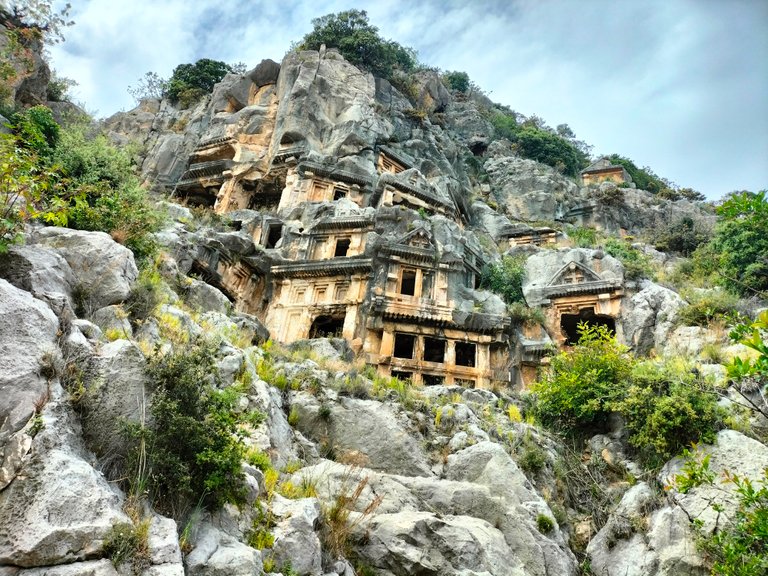
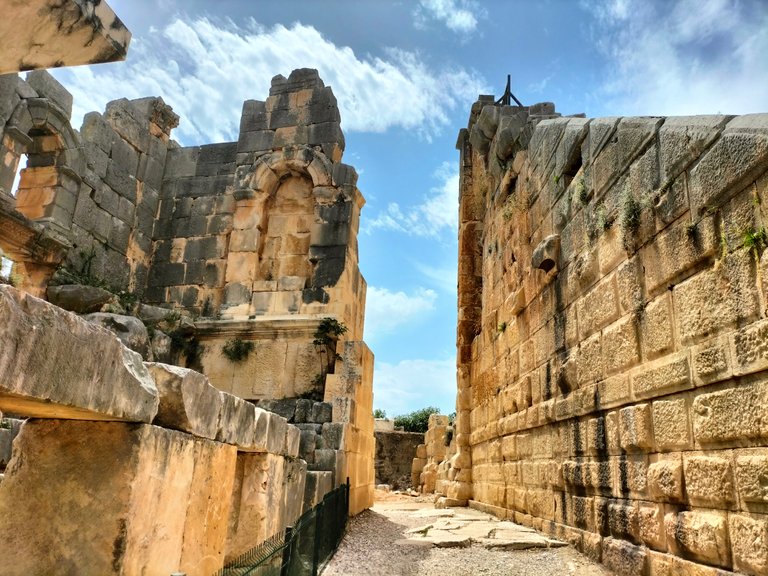
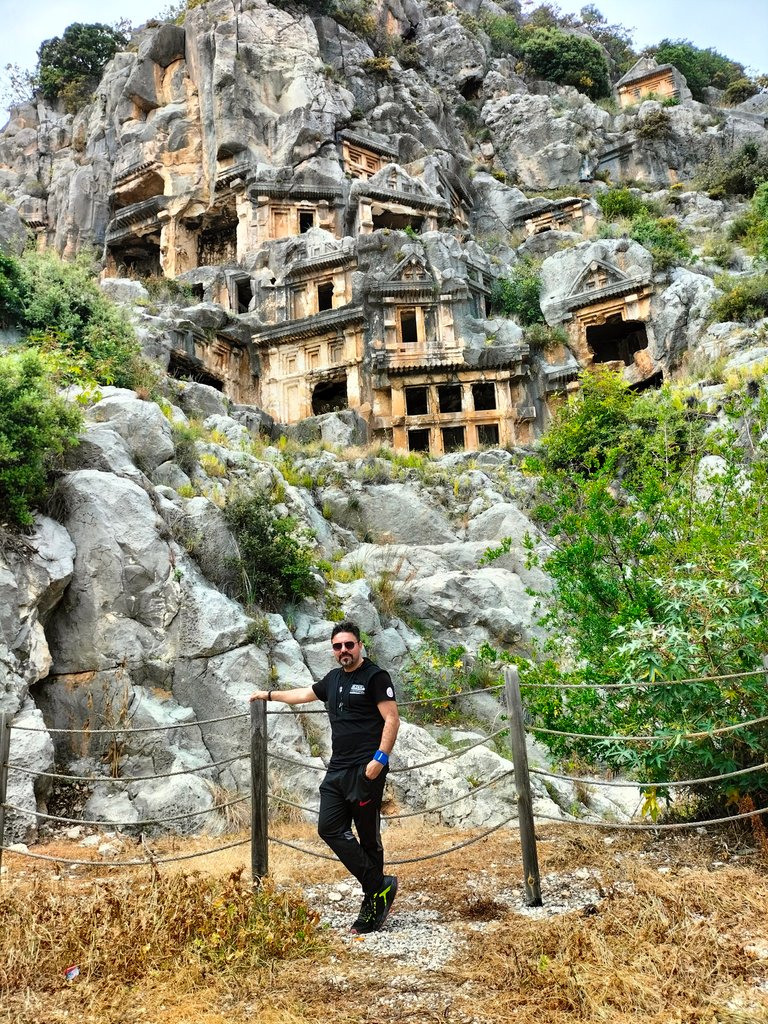
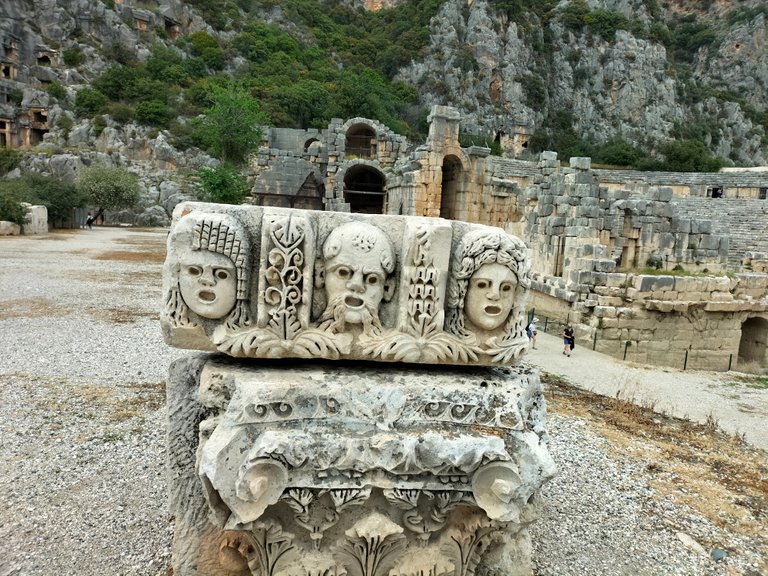
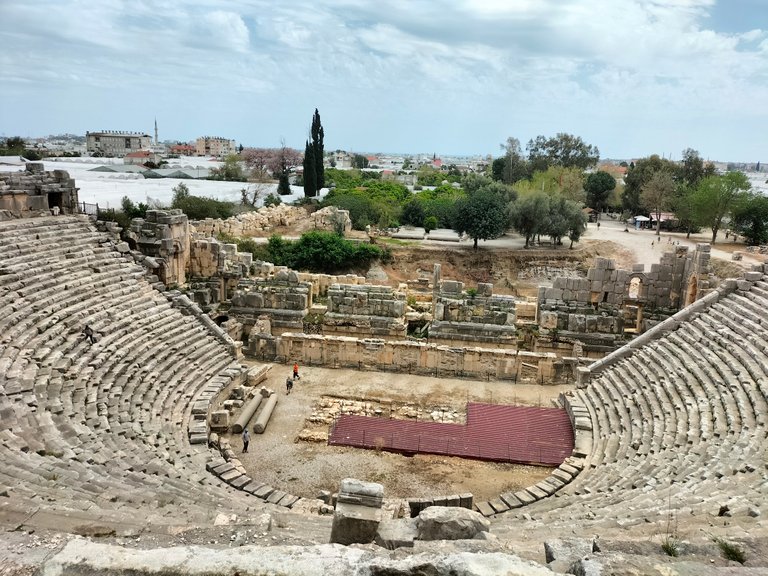
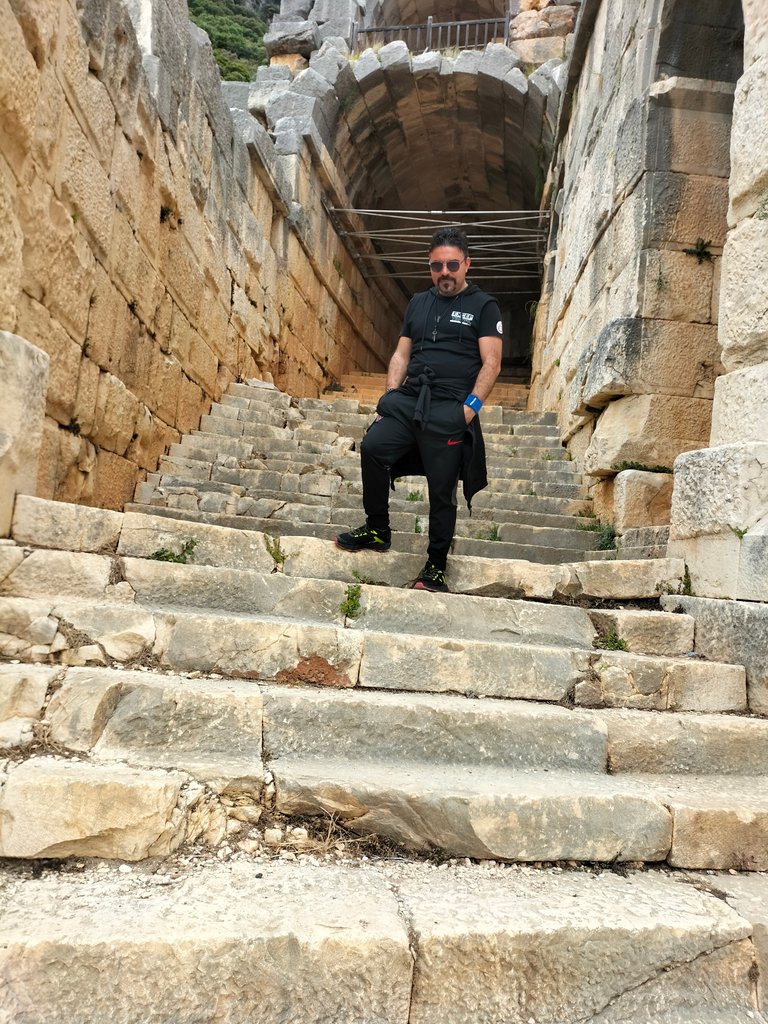
The Ancient City of Myra, where I came across works of many different civilizations, is located in the Demre district of Antalya. You can easily reach the ancient city by following the signs from the center of Demre district, which you can reach from Antalya in an average of two hours. I am sure that you will be amazed, especially when you see the Rock tombs. Because it was the Rock tombs that I saw that impressed me the most. I can say that it is one of the most striking cities of the Mediterranean, thanks to the artifacts and structures left by three different civilizations. Regardless of summer and winter, in the city where local and foreign tourists are the most frequented, entrance fees are charged. The entrance fee is 180 TL per person. So it's around $10. Museum card holders pay 70 TL. No fee is charged from our disabled and martyrs' relatives. The visiting hours were determined as 08:00 to 20:00. At the entrance, there is a classic museum shop and an area with mostly souvenir shops. You enter the city by walking from this area.
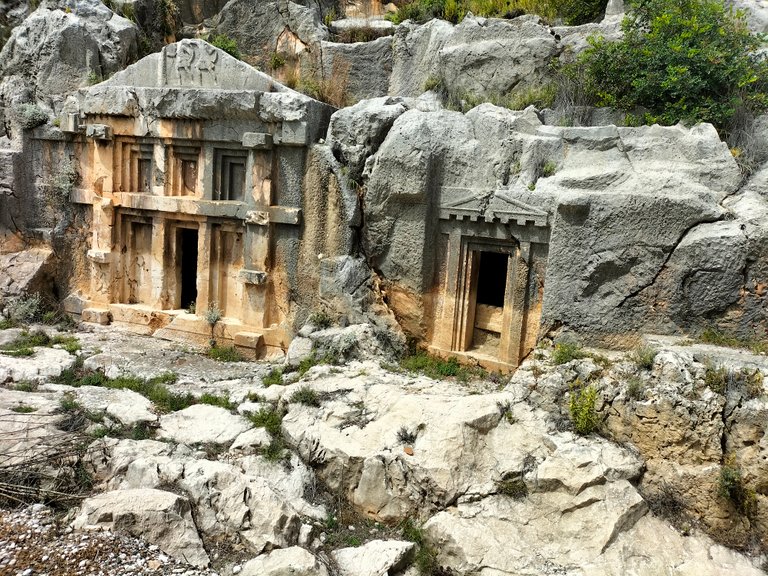
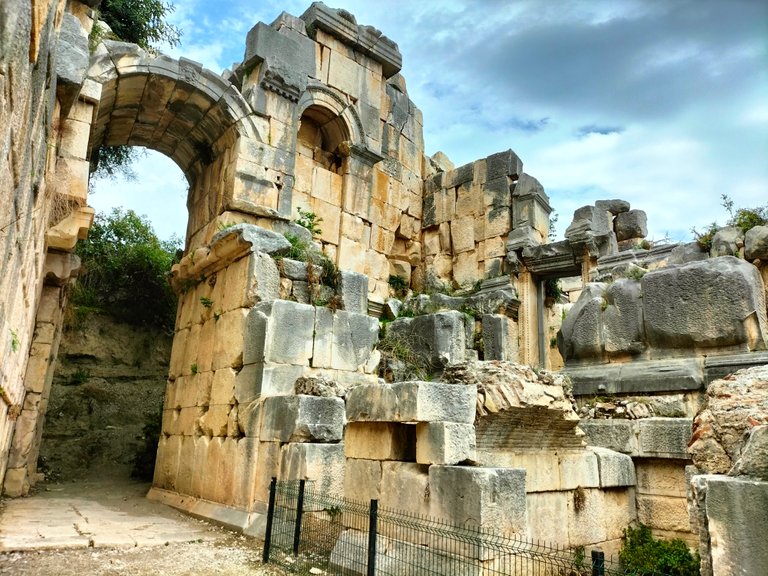
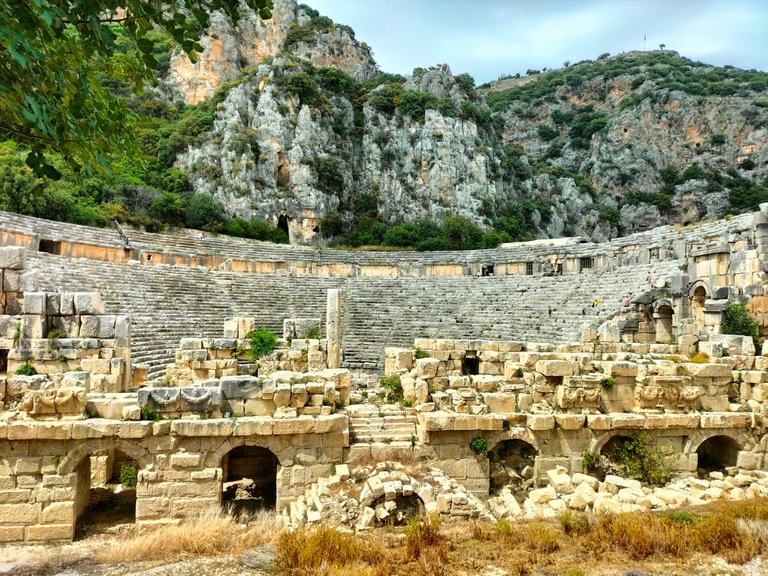
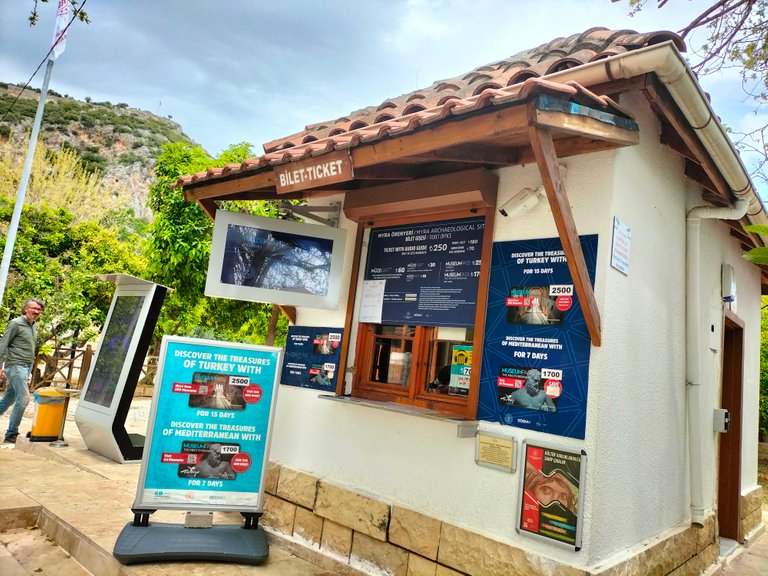

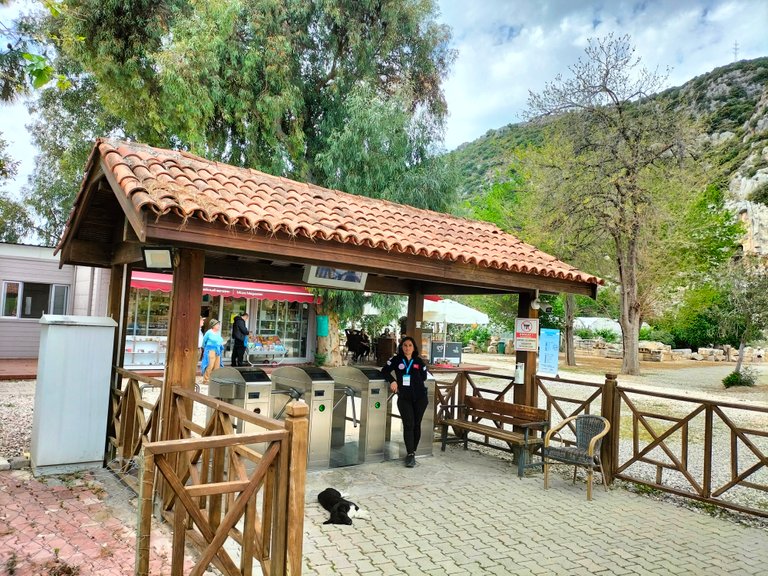
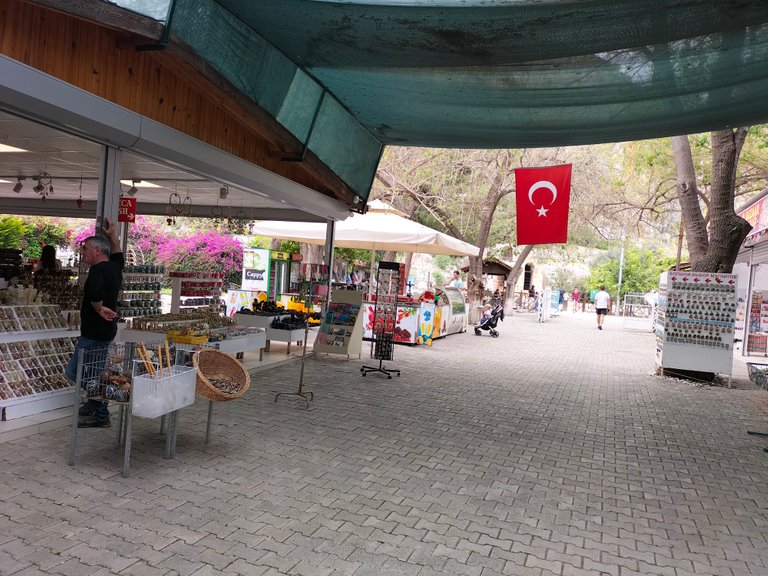
When I enter the city, there are information boards written in different languages, as in every ancient city entrance. According to the information given here, it was written that Myra's former name was Muri. He also stated that Myra's history began with the Bronze Age settlers and was one of the most important settlements of Lycia in the classical period. Alexander the Great first conquered the region in 333 BC. Finally, the city was left to Rhodods, an ally of Rome. He gave back his freedom to Lycia in 167 BC in Rome. It is a member of the Lycian League and has 3 votes because it is one of 6 cities. It was one of the most important cities during the Roman Imperial Period.
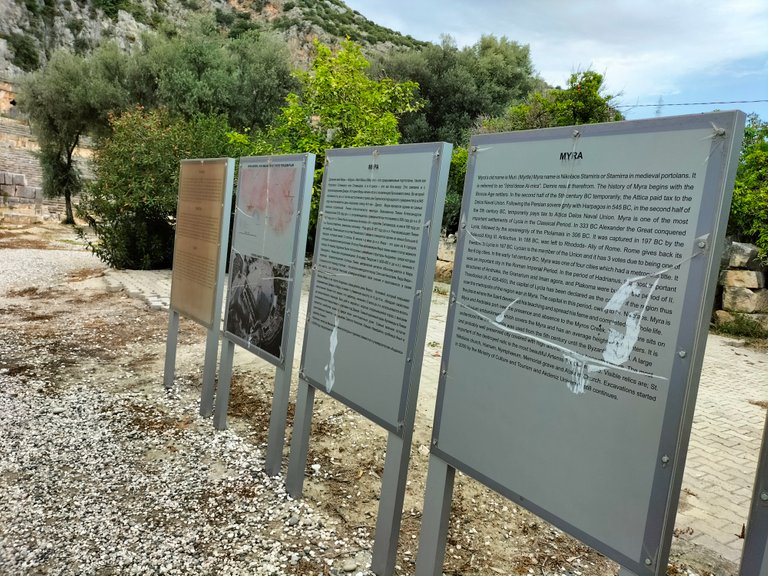
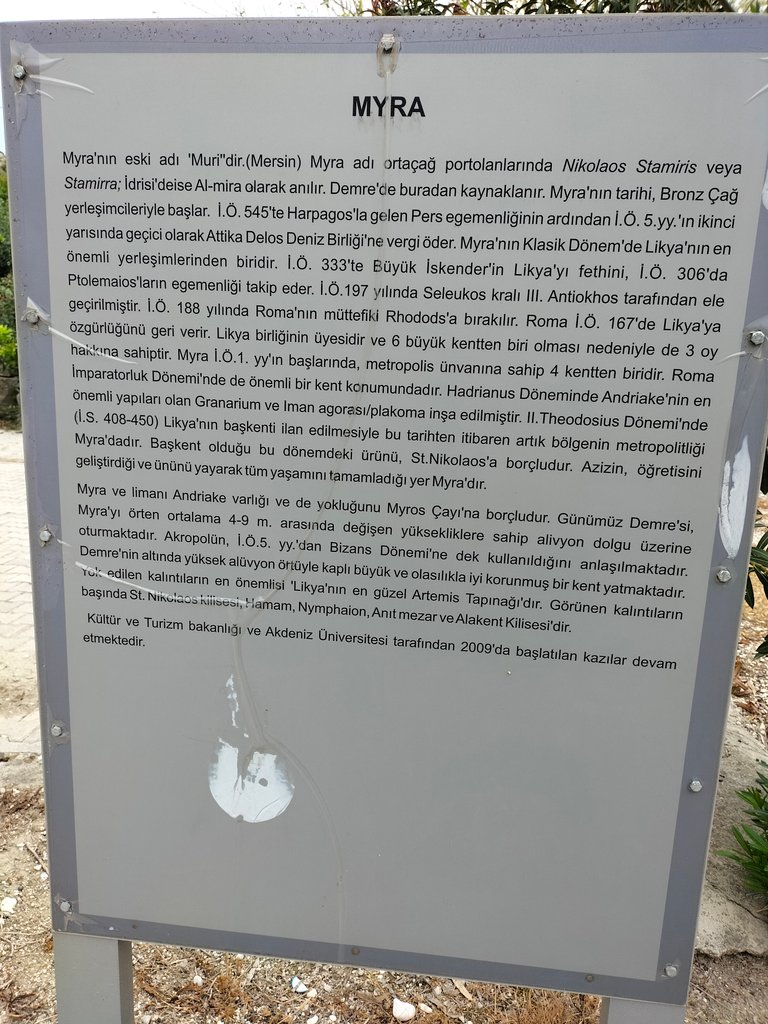
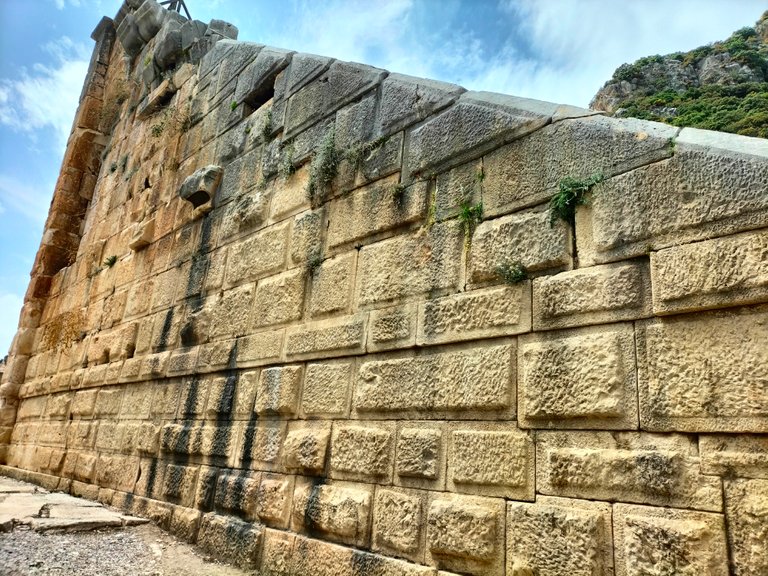
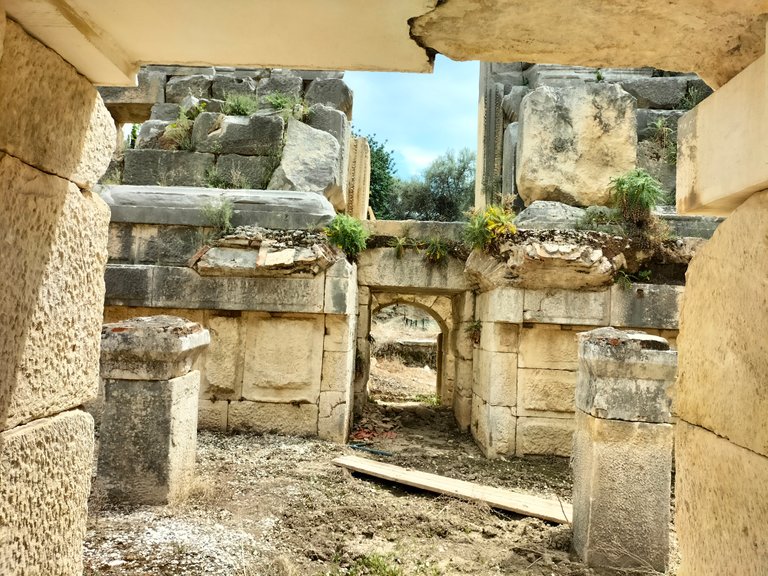

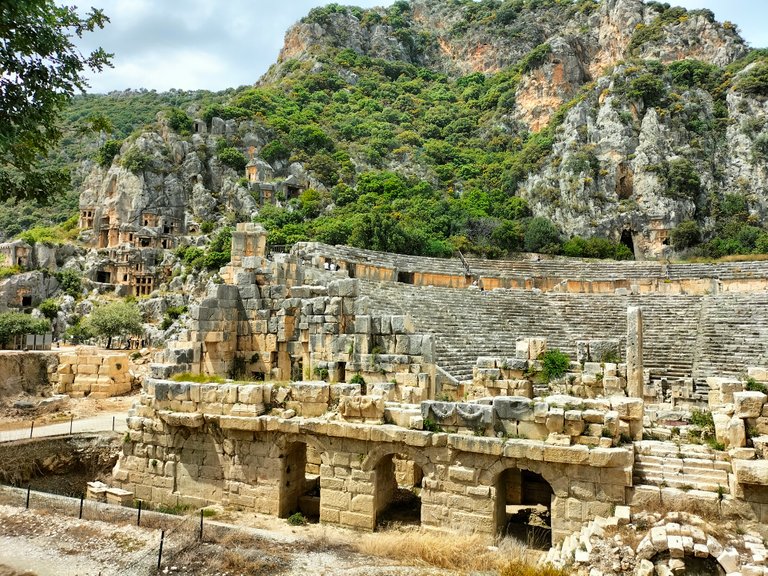

The ancient city was established in a large area under a high mountain slope. At the starting point of the mountain, there is an ancient theater belonging to the Roman Period, whose stones are intact and undamaged. The stones, which have about 30 stairs, have managed to remain intact until today without any damage. They covered the front of the stage with red colored boards. There are two entrance areas to the right and left of the stage. The fact that these arch-shaped entrances have high doors also caught my attention. Unlike the ancient theaters I've seen, the color fill on the stones also looks enormous. It is also understood that the stones, reminiscent of the yellow and gray matte color, were made by different civilizations. At the top of the stage, there are entrance sections with arches and flat doors for those who come to watch the theater. Above these entrances, sitting areas consisting of 6 stairs have been added.
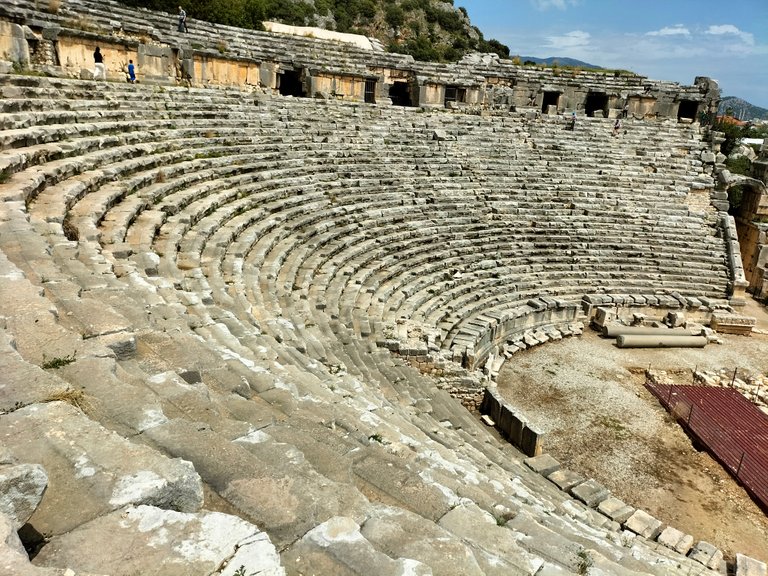
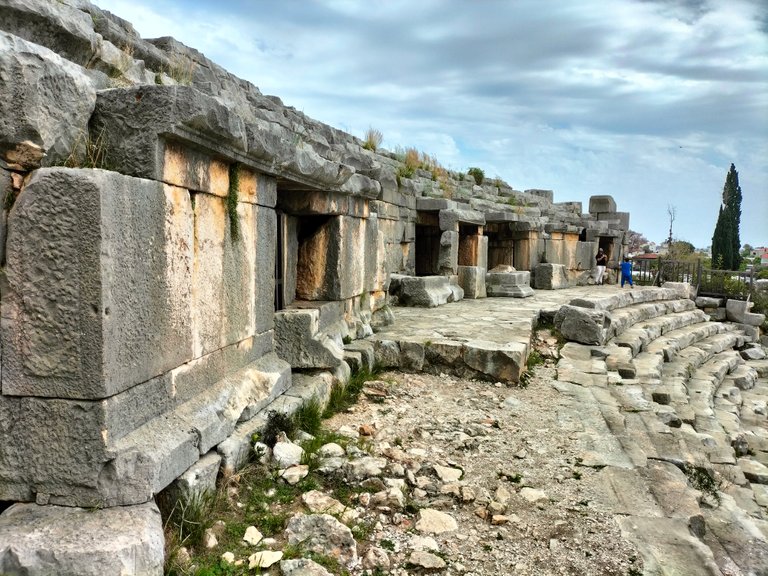
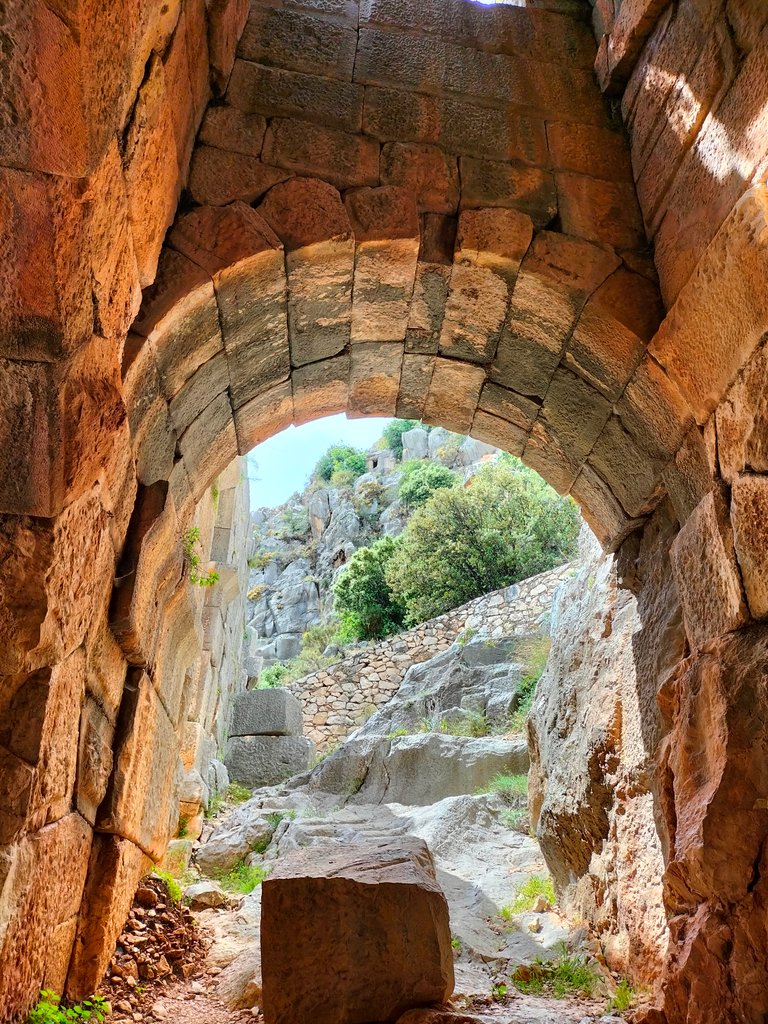
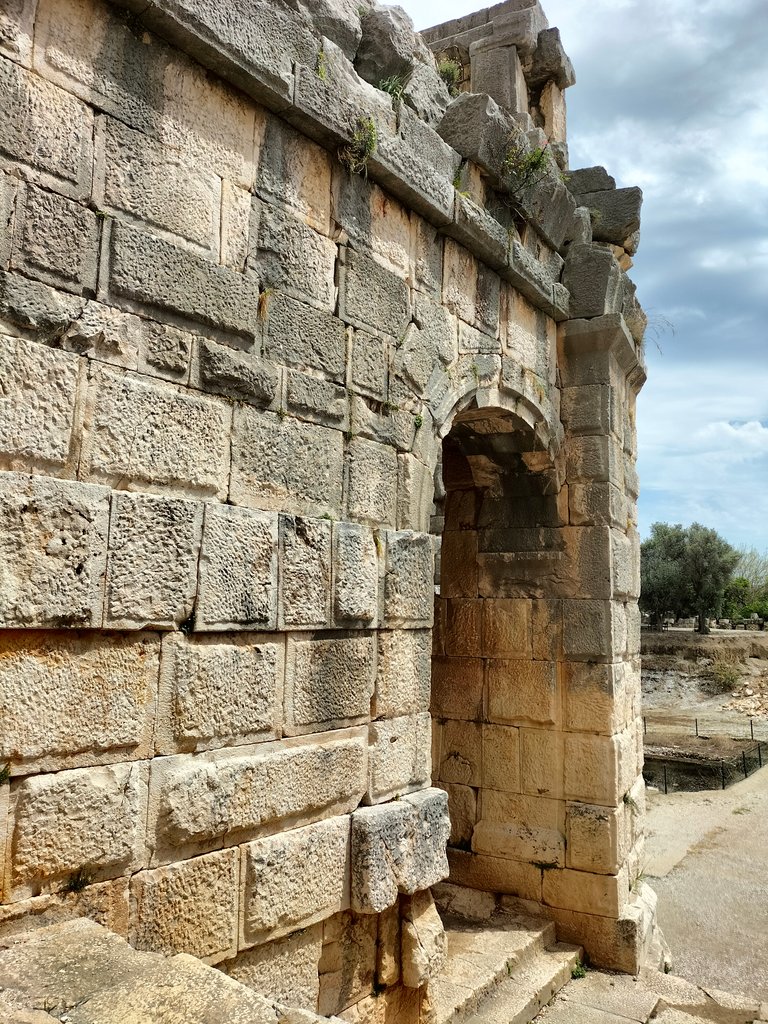
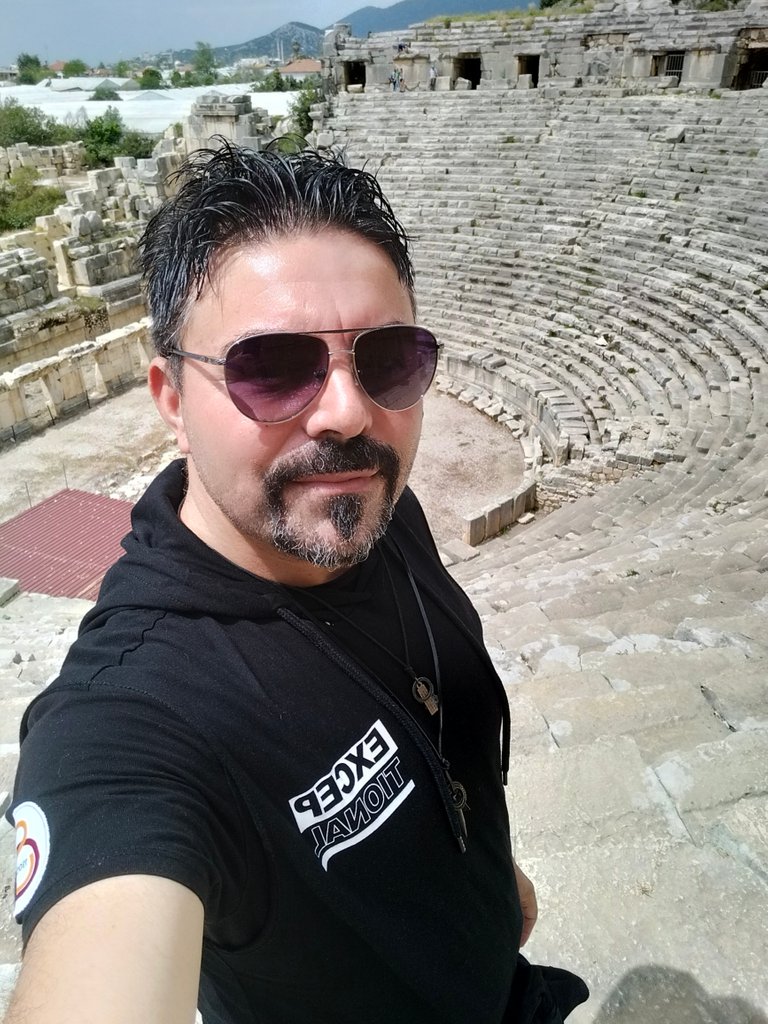
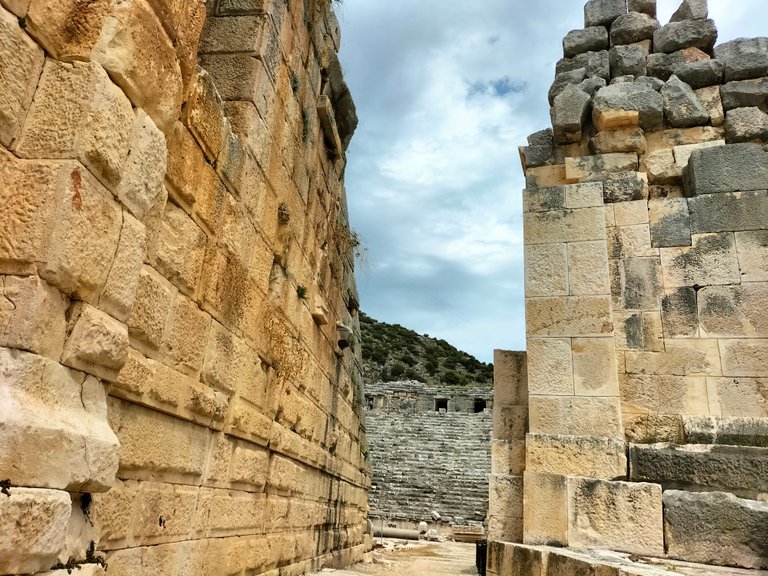
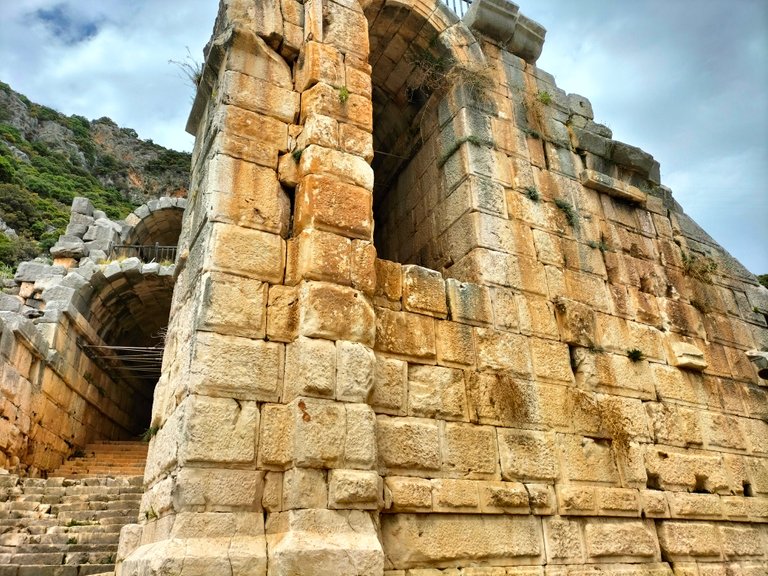
Behind the front of the stage of the Ancient Theatre, there are sequential doors. After passing through these gates, walking in the space between, I came across shapes reminiscent of different human and animal faces on the stones rising next to them. In fact, it was written in ancient writings on and next to those stones that looked enormous. The lush green grass and bright yellow stones coming out of these rising stones remind the smell of history.
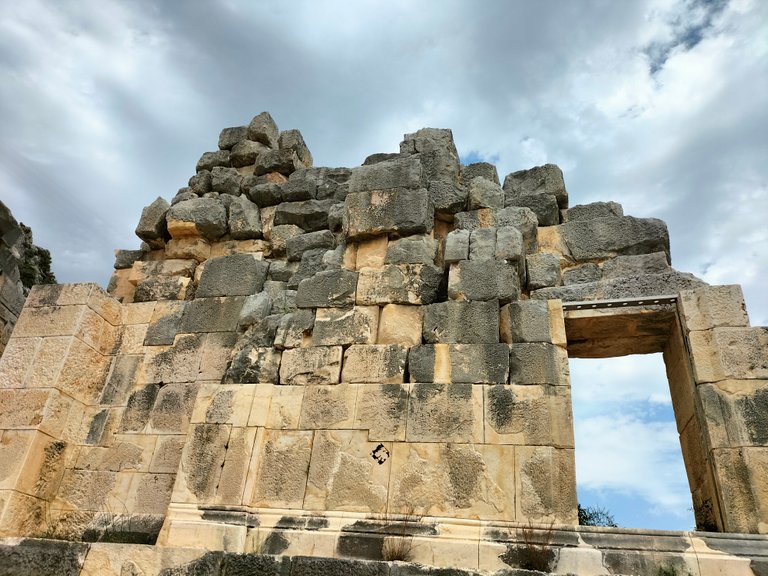
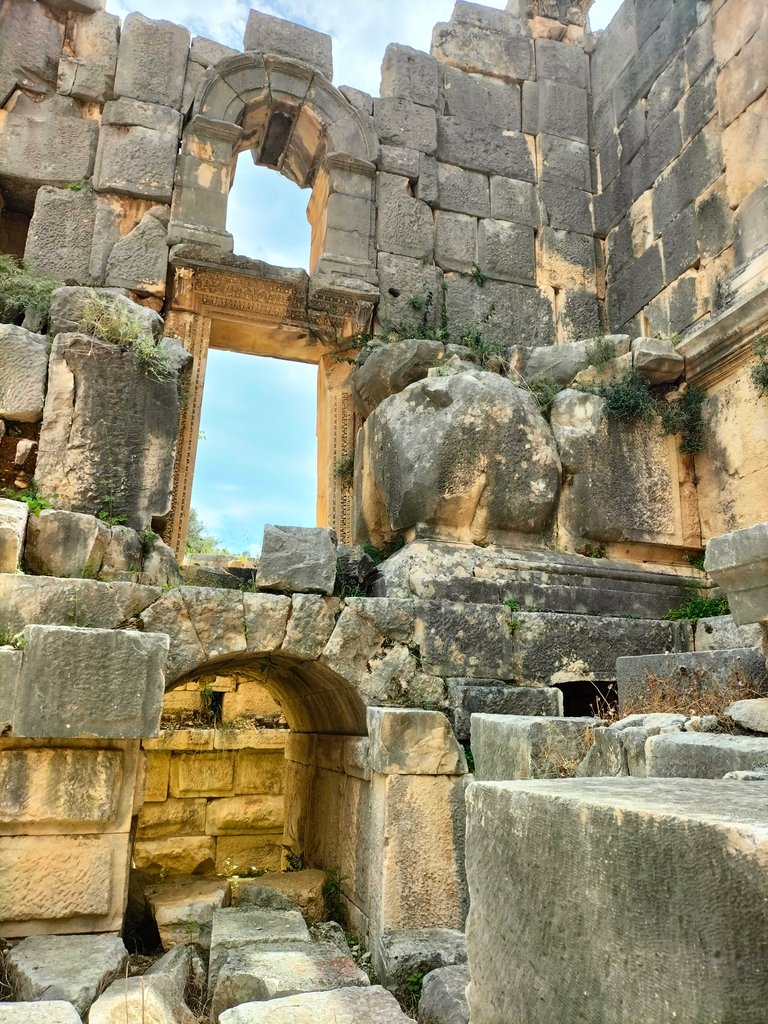
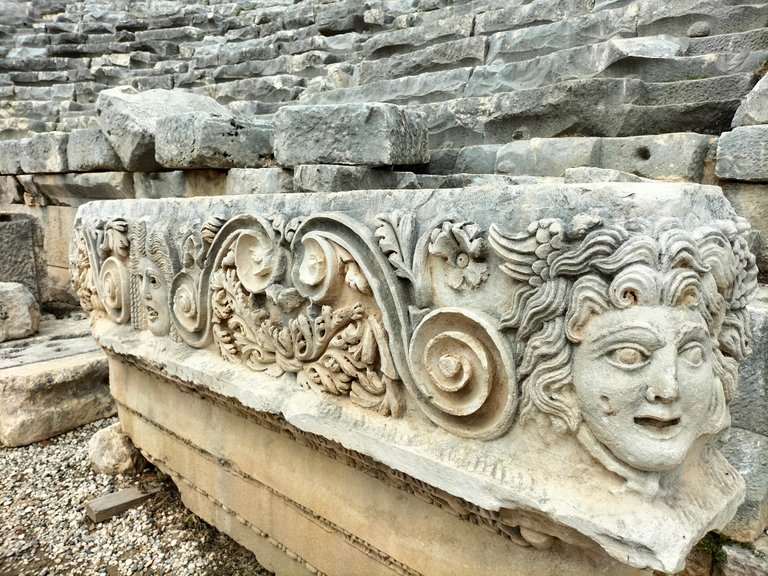
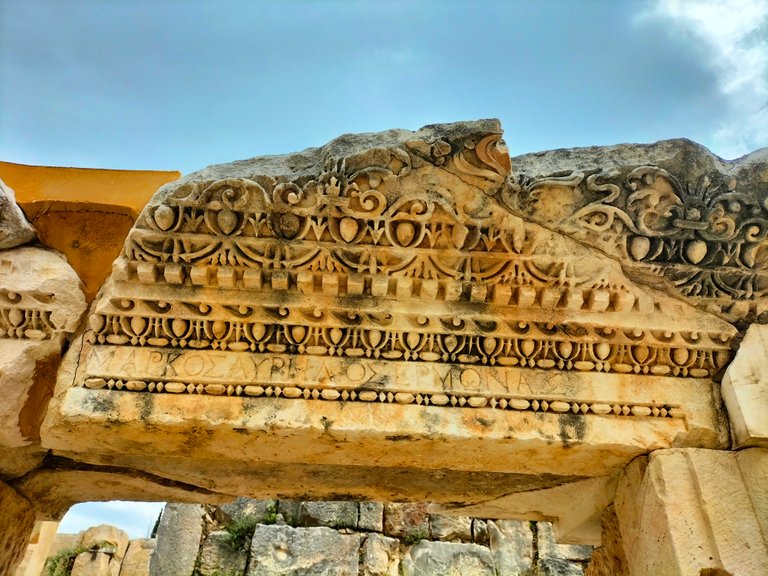
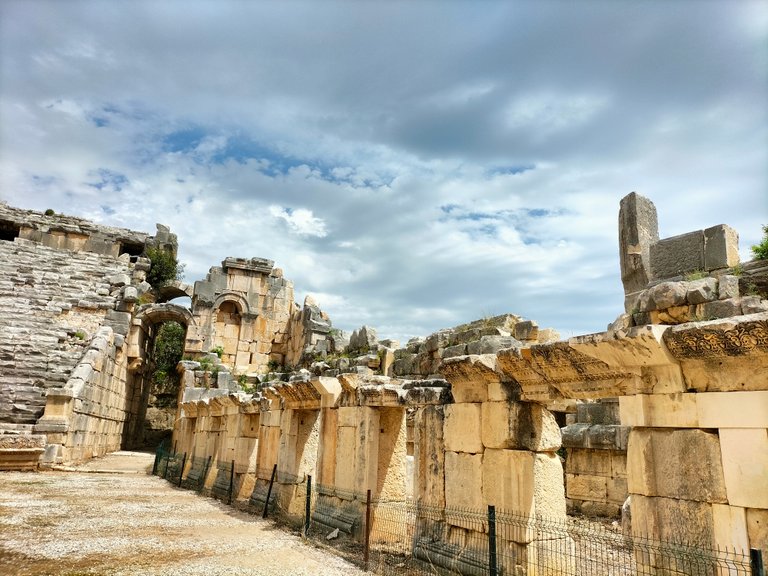
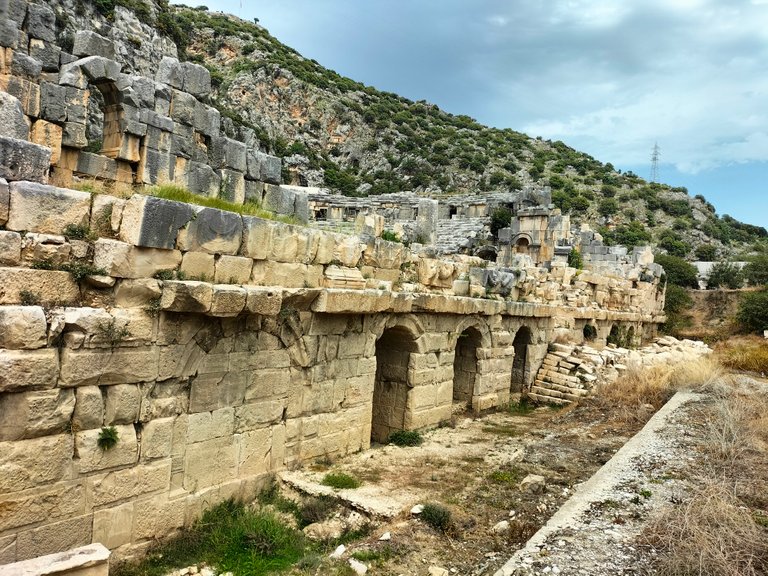
On the left side of the Ancient Theatre, there were rock tombs that I had never seen before and admired. They looked as if houses had been placed inside the mountain. Their doors, windows and roofs are lined in reliefs with different color tones. I had to pose in front of such a magnificent-looking work. I can say that this scene reminded me a bit of hobbit houses. The lush bushes and grasses on the rock tombs add a unique beauty to this landscape.
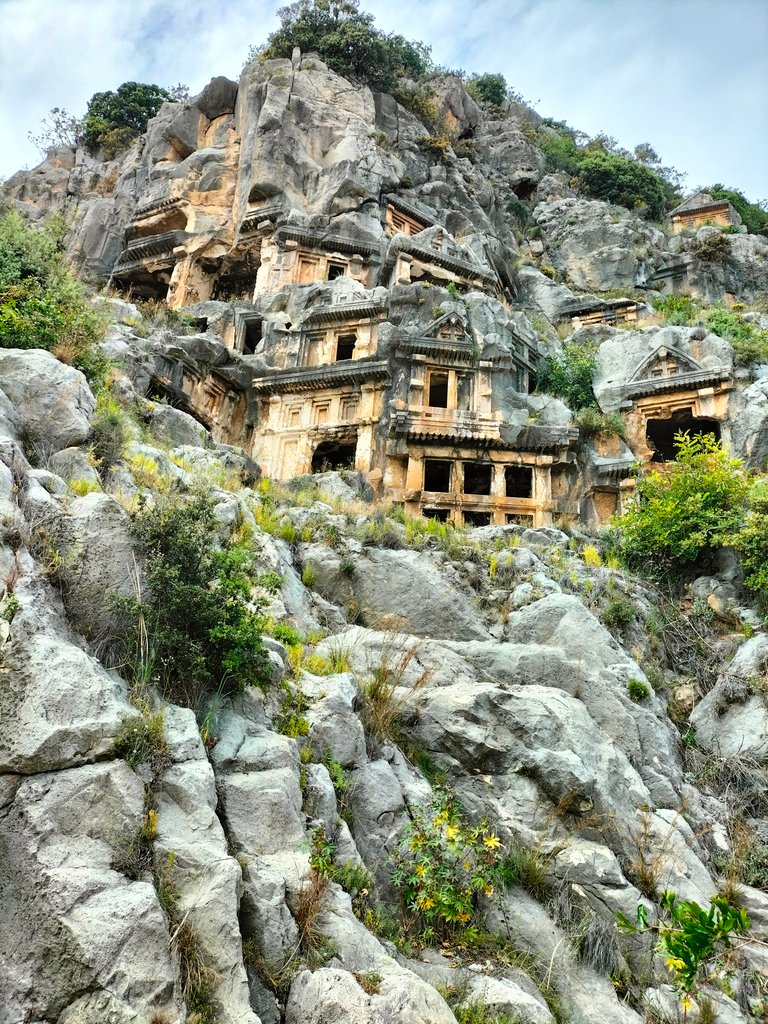
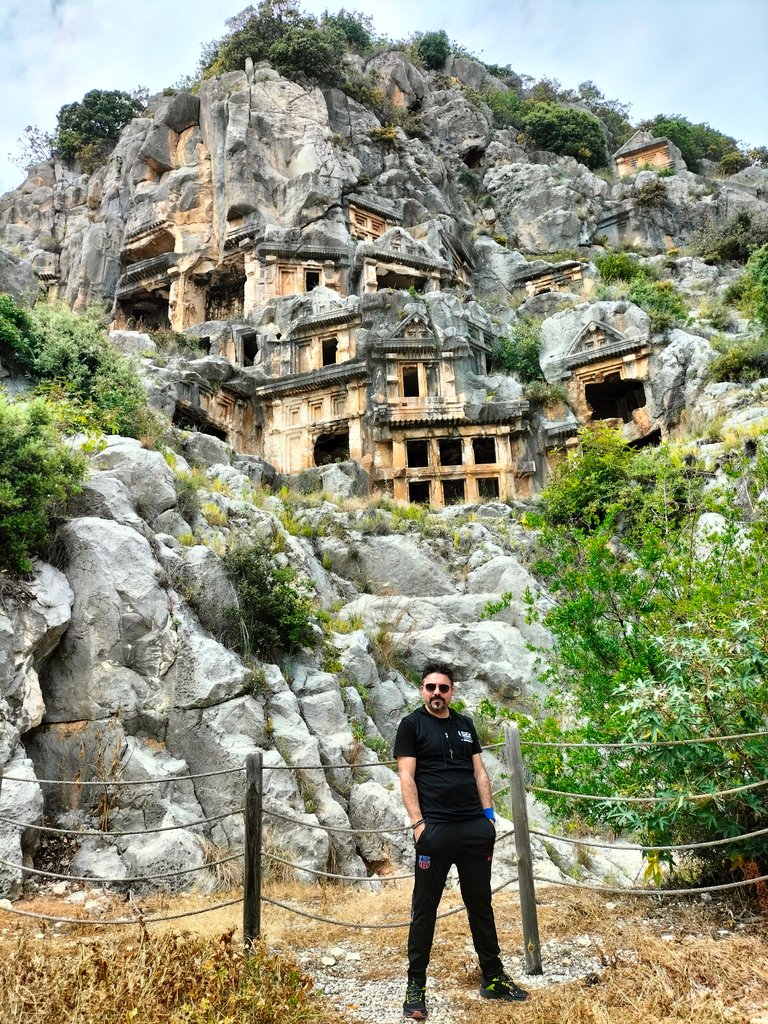
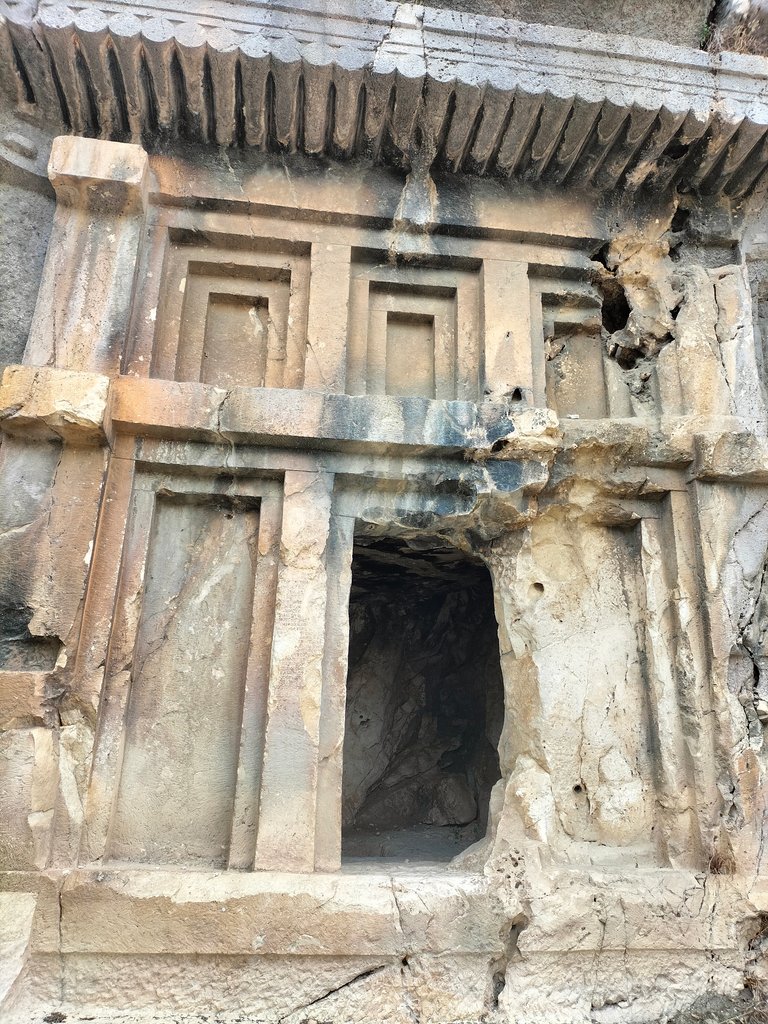

While walking around the ancient city of Myra, they placed the stones coming out of the walls scattered in different parts of the city. The ones that caught my attention the most were the inscribed monumental stones and the human figures with slightly scary faces. Here I want to show you some of those stones.
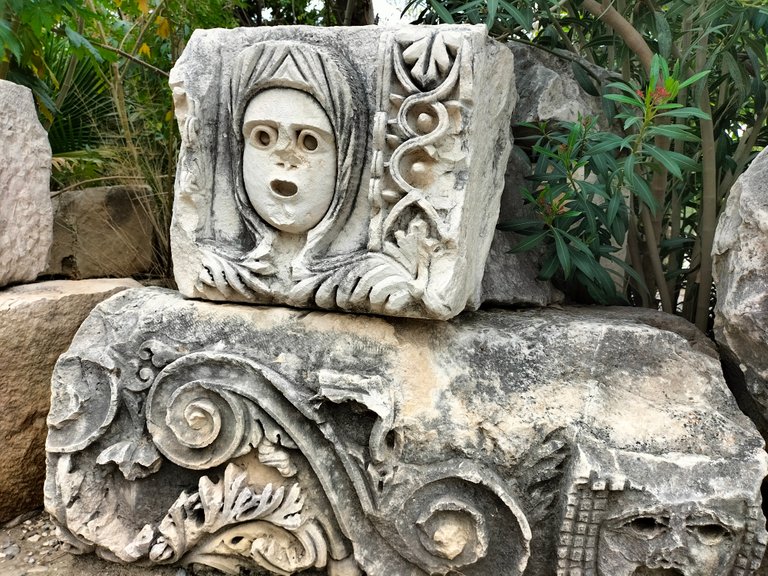
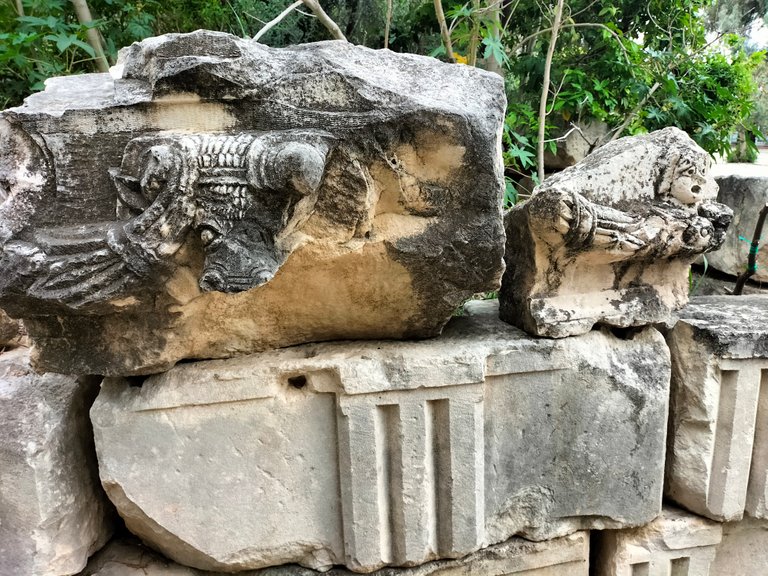
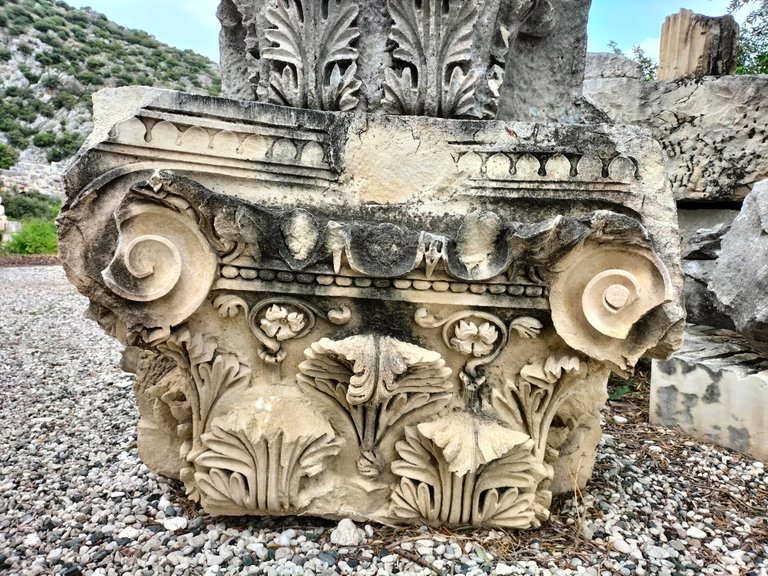
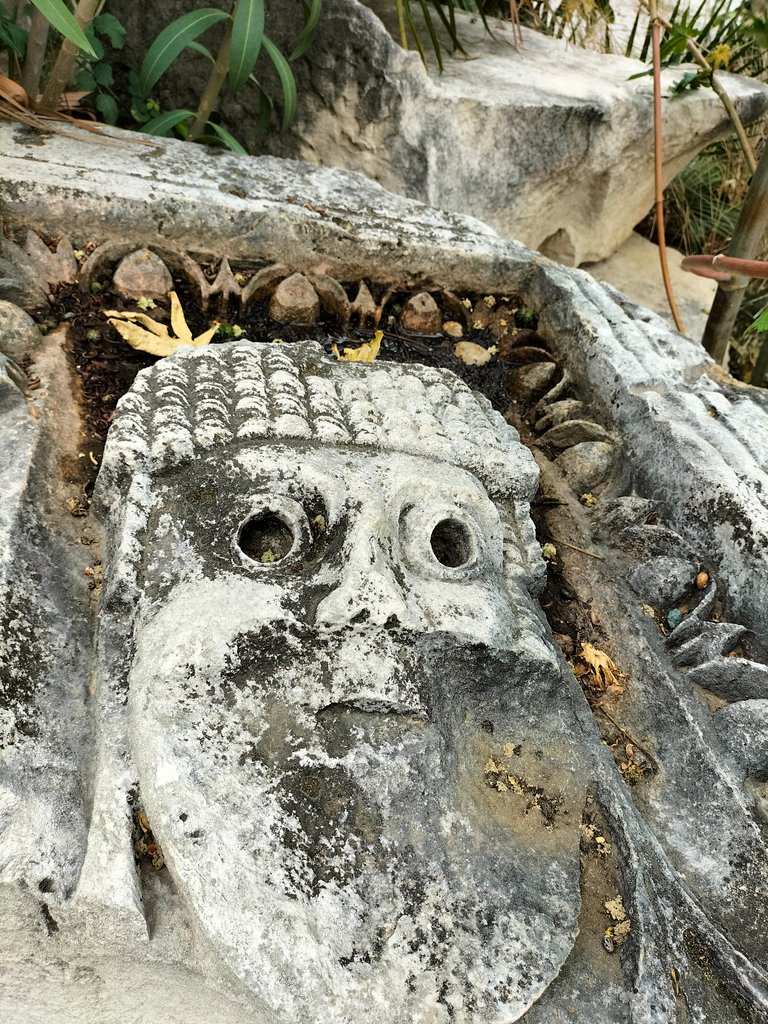
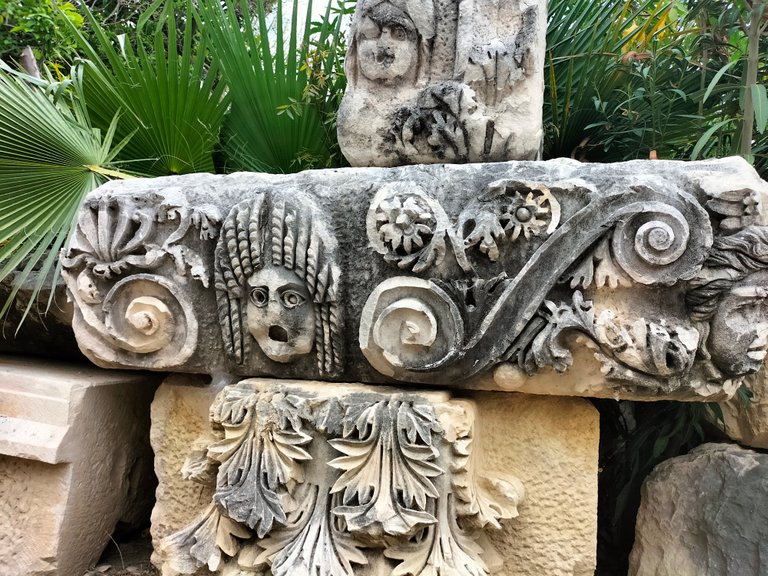

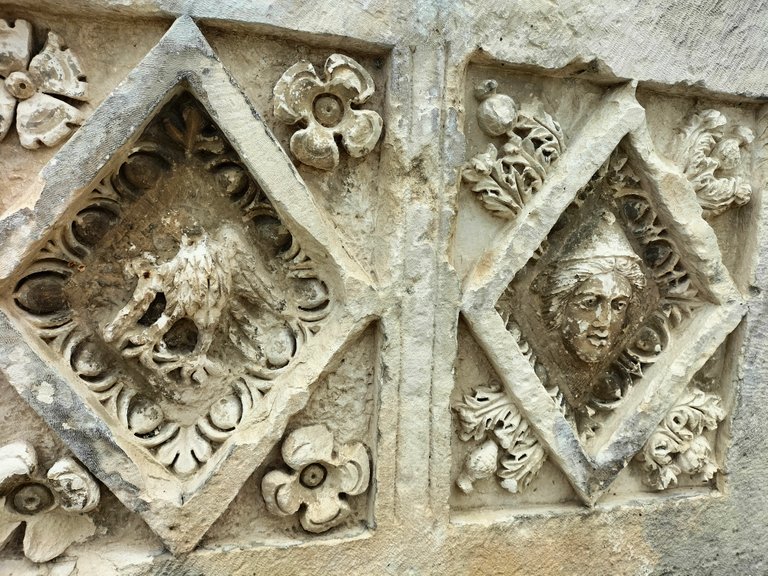

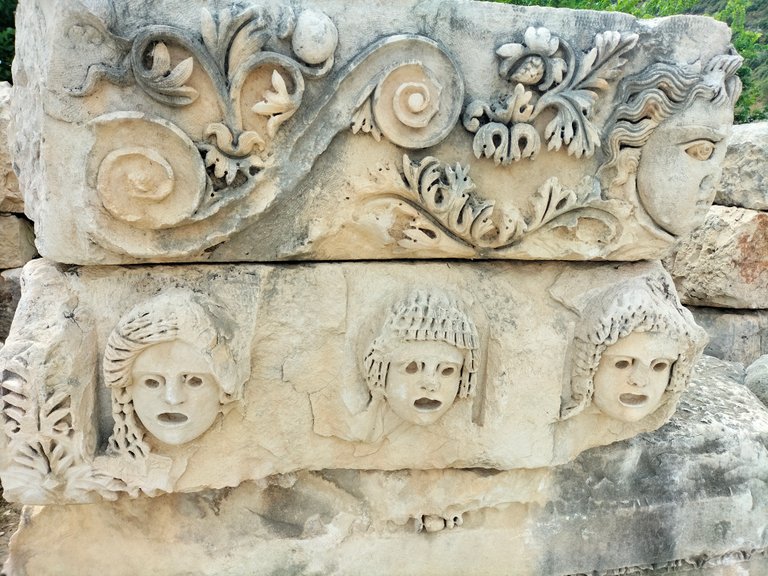
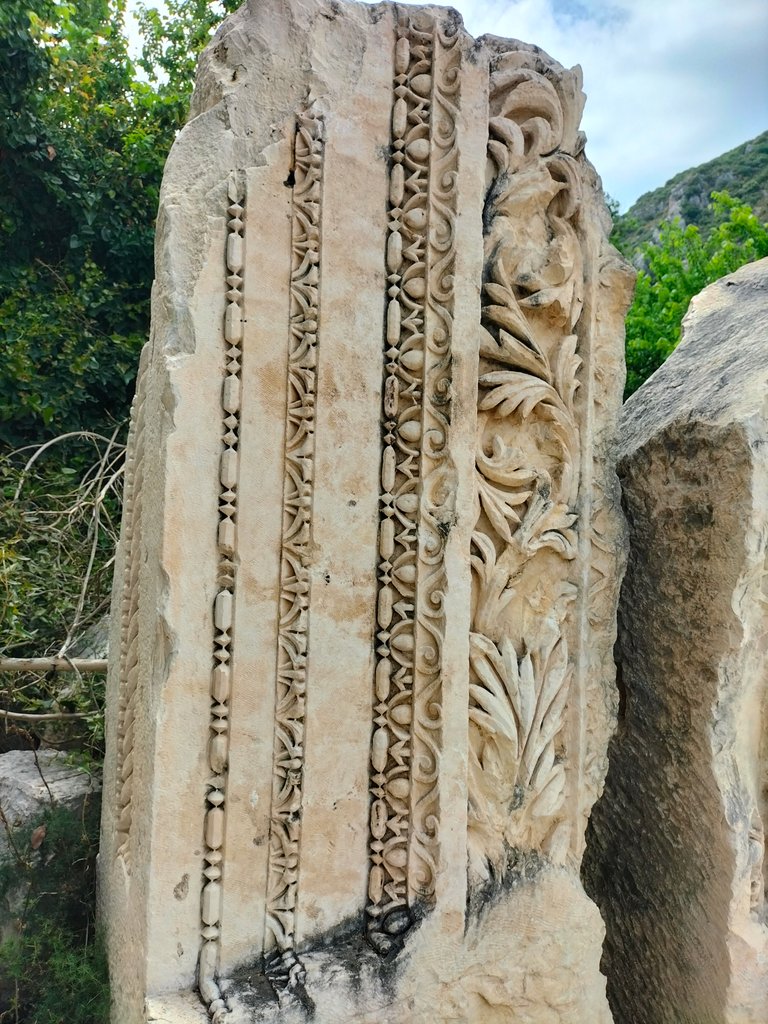
Myra Ancient City is surrounded by high mountains on three sides. The Demre Stream runs right next to the city. We can also understand from the artifacts left by empires in different civilizations that there is a very old history. I couldn't understand why the stones around it and the pictures on the walls were so scary and frightening.
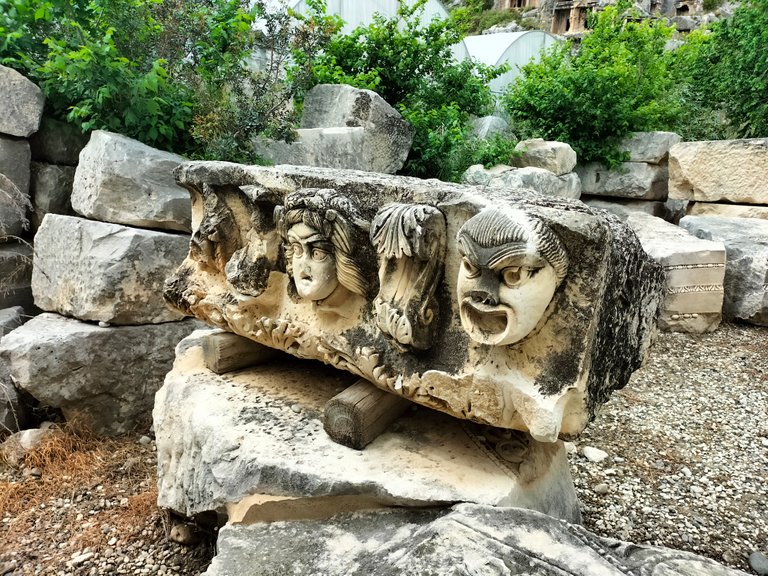
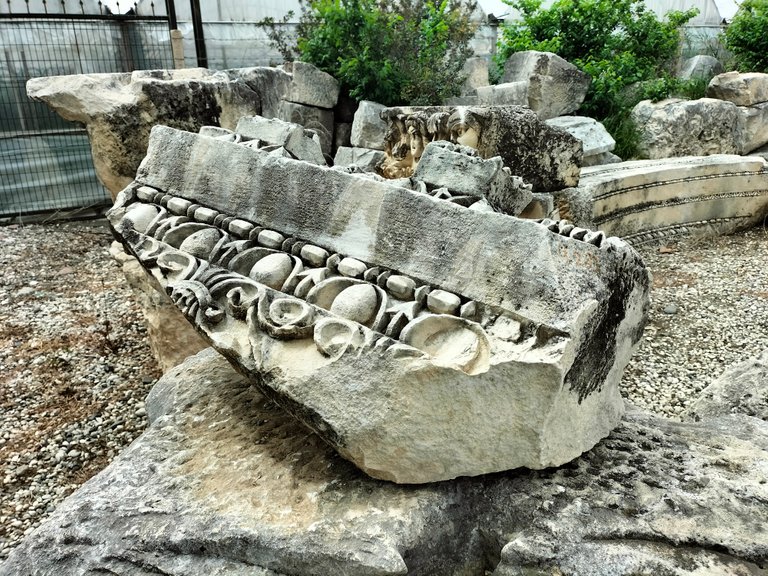
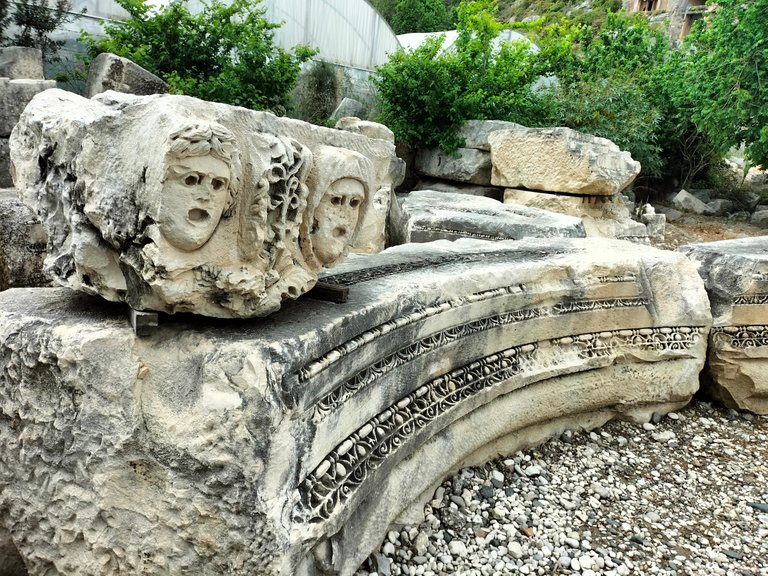
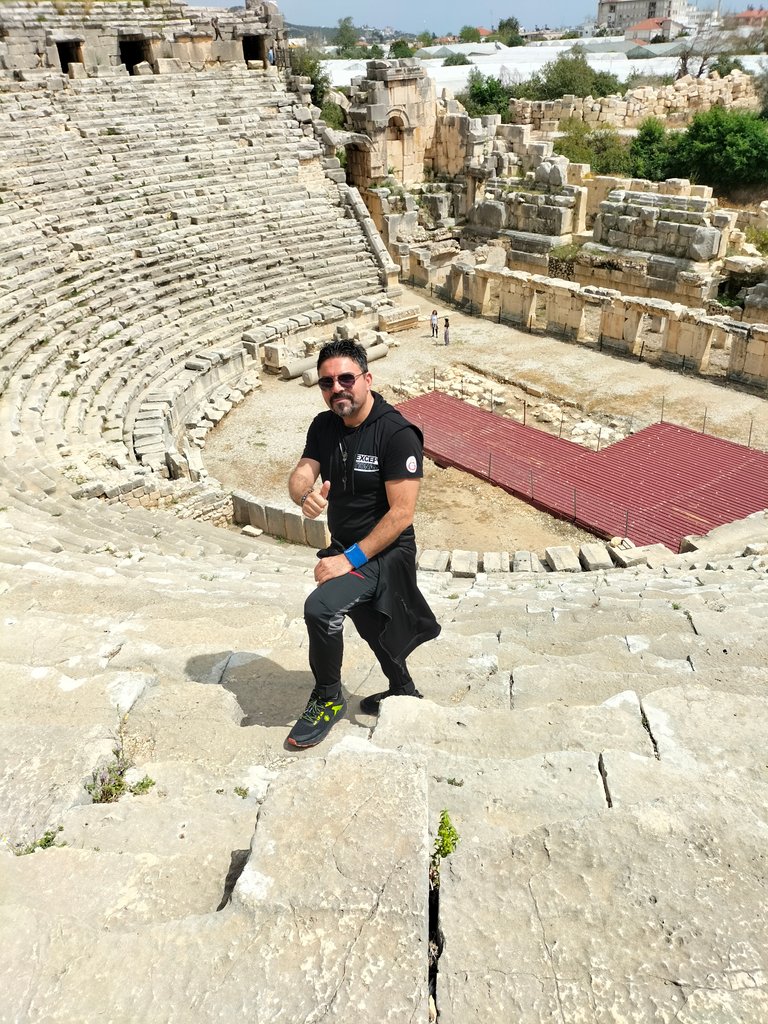
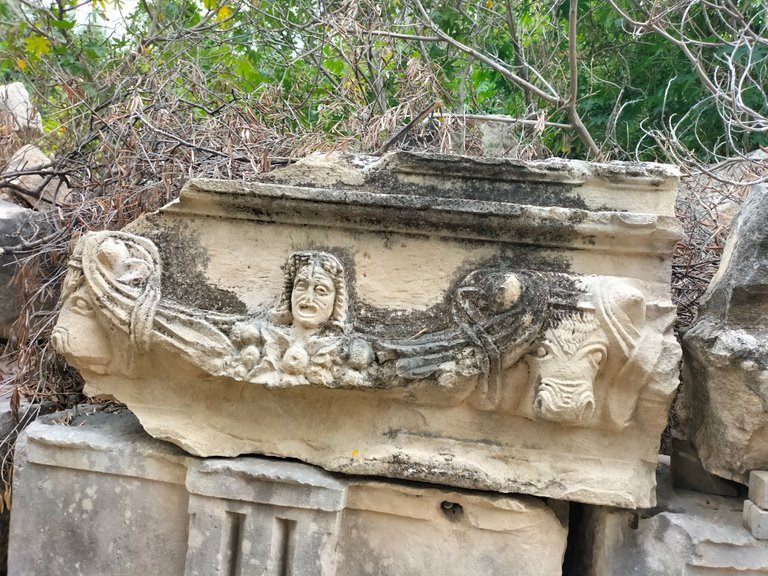
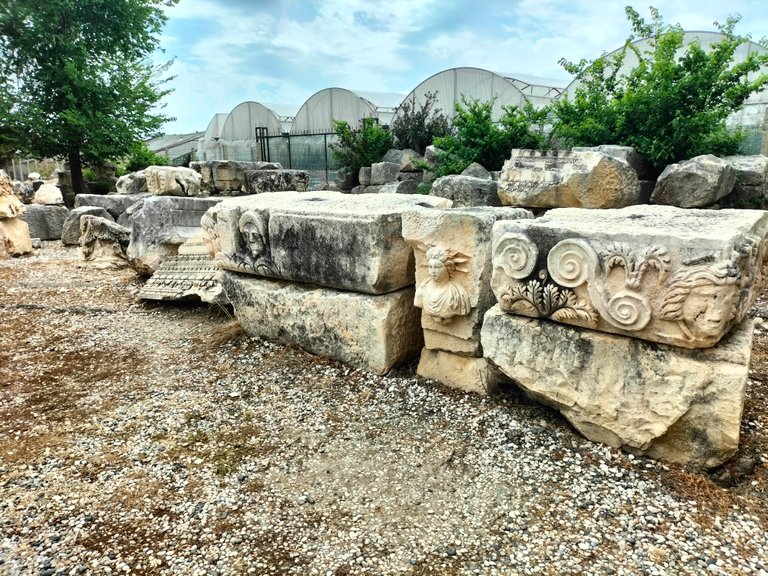
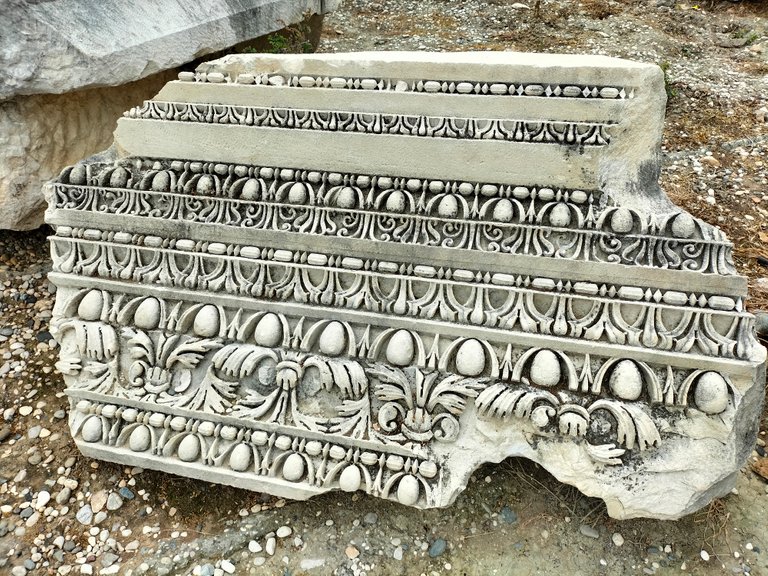
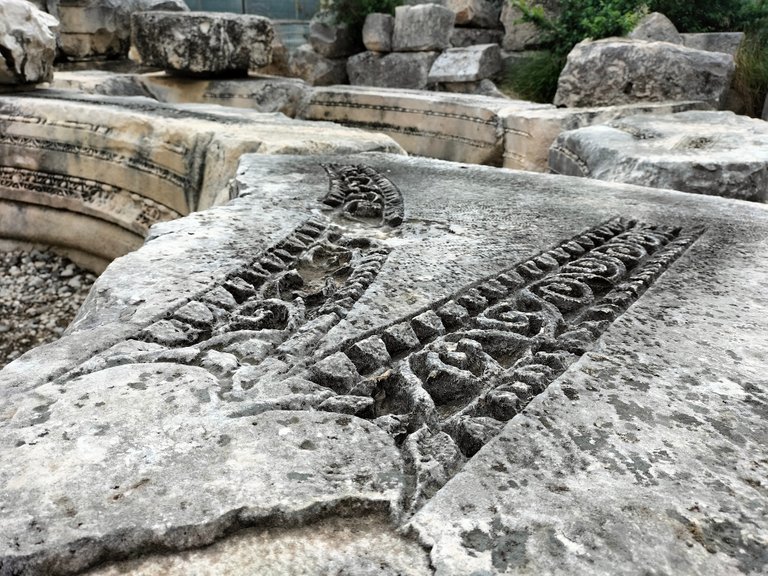
For me, I would like you to see and visit the city, which I put in the first place in the list of ancient cities that should be visited with both its history and the artifacts left today. See you again, bye for now.
TR
Merhabalar,
Bir önceki yazımda sizlere Antalya Kaş yolculuğumdaki rotama takılan güzel sahillerden ve antik şehirlerden bahsedeceğimi söylemiştim. Bu yolculuğumda Likya Birliği'nin bir çok antik şehirlerini gezme fırsatını yakaladım. Bugün de sizlere Akdeniz'in günümüze kadar gelmeyi başarmış en önemli antik kentlerden biri olduğunu düşündüğüm Demre Myra antik kentinden bahsedeceğim.






Bir çok farklı medeniyetlerinin eserlerine rastladığım, Myra Antik Kenti, Antalya'nın Demre ilçesinde yer alıyor. Antalya'dan ortalama iki saatte gelebileceğiniz Demre ilçesinin merkezinden tabelaları takip ederek antik kentte rahatlıkla ulaşabilirsiniz. Özellikle Kaya mezarlarını görünce hayran kalacağınıza eminim. Çünkü beni en çok etkileyen gördüğüm Kaya mezarları olmuştu. Üç farklı medeniyetin bırakmış oldukları eserler ve yapılar sayesinde Akdeniz'in en çok dikkat çeken kentlerinden biri olduğunu söyleyebilirim. Yaz, kış fark etmeksizin yerli ve yabancı turistlerin en çok uğradığı kentte girişlerde ücretlidir. Giriş ücreti olarak kişi başı 180 TL alınıyor. Yani yaklaşık 10 dolar civarındadır. Müze kartı olanlar 70 TL ödüyorlar. Engelli ve şehit yakını vatandaşlarımızdan herhangi bir ücret talep edilmiyor. Ziyaret saatlerini de saat 08.00 ile 20.00 olarak belirlemişler. Girişte, klasik müze mağazası ve çoğunlukla hediyelik eşyalar satan esnafların olduğu bir alan var. Bu alandan yürüyerek kentte giriş yapıyorsunuz.







Kente giriş yaptığımda her antik kent girişinde olduğu gibi, farklı dillerde yazılmış bilgilendirme panoları var. Burada verilen bilgi göre, Myra'nın eski adının Muri olduğu yazıyordu. Ayrıca, Myra'nın tarihi Bronz çağ yerleşimcileriyle başladığını ve klasik dönemde Likya'nın en önemli yerleşimlerinden biri olduğunu da belirtiyordu. Bölgeyi ilk olarak Büyük İskender İ.Ö 333'te fethetmiş. Son olarak da kent Roma'nın müttefiki Rhodods'a bırakılmış. Roma'da İ.Ö 167' te Likya'ya özgürlüğünü geri vermiş. Likya Birliği'nin üyesidir 6 kentten büyük biri olması nedeniyle 3 oy hakkına sahipmiş. Roma İmparatorluk Dönemi'nde en önemli kentlerden biri olmuş.







Antik kent, yüksek bir dağ yamacının altında geniş bir alanda kurulmuş. Dağın başlangıç noktasında Roma Dönemine ait, taşları sağlam ve hasar görmemiş antik bir tiyatro var. Yaklaşık 30 merdiveni bulunan taşlar, günümüze kadar hasar görmeden sapasağlam kalmayı başarmış. Sahnenin önünü kırmızı renkli tahtalarla kaplamışlar. Sahnenin sağında ve solunda iki giriş alanı var. Kemer şeklindeki bu girişlerin yüksek kapılı oluşu da dikkatimi çekti. Gördüğüm antik tiyatrolardan farklı olarak taşların üzerindeki renk dolgusu da muazzam görünüyor. Sarı ve gri mat rengini anımsatan taşların farklı medeniyetler tarafından yapıldığı da anlaşılıyor. Sahnenin en üstünde yine tiyatroyu izlemeye gelenler için kemerli ve düz kapılı giriş bölümleri yer alıyor. Bu girişlerin üstünde de 6 merdivenden oluşan oturma alanları daha eklenmiş.







Antik Tiyatro'nun sahne önünün arkasında, sıralı olarak kapılar duruyor. Bu kapılardan geçtikten sonra, aradaki boşlukta yürüyerek, yanından yükselen taşların üzerindeki değişik insan ve hayvan yüzlerini anımsatan şekillerle karşılaştım. Hatta muazzam görünen o taşların üstünde ve yanı başlarında eski türden yazılarda yazılmış. Yükselen bu taşların aralarından çıkan yemyeşil otlar ve sarı parlak taşlar tarihin kokusunu da anımsatıyor.






Antik Tiyatro'nun sol tarafında ise daha önce hiç görmediğim ve hayranlıkla baktığım, kaya mezarları duruyordu. Dağın içine sanki ev yerleştirilmiş gibi görünüyorlardı. Kapıları, pencereleri ve çatıları kabartma şeklinde farklı renk tonlarıyla sıralanmışlar. Böyle muhteşem görünümlü bir eserin önünde mutlaka poz vermeliydim. Bu manzara bana biraz hobbit evlerini de anımsattı diyebilirim. Kaya mezarlarının üstündeki yemyeşil çalılar ve otlarda bu manzaraya eşsiz bir güzellikte katıyor.




Myra Antik Kentin etrafını dolaşırken duvarlardan çıkan taşları, kentin değişik noktalarına dağınık olarak yerleştirmişler. En çok dikkatimi çekenler, yazılı anıtsal taşlar ve yüzleri biraz korkutucu olan insan figürleri oldu. İşte o taşlardan bazılarını sizlere de göstermek istiyorum.










Myra Antik Kentin üç tarafı da yüksek dağlarla çevrilmiş durumdadır. Kentin yanı başından Demre çayı geçiyor. Çok eski bir geçmişin olduğunu da farklı medeniyetlerdeki imparatorlukların bıraktıkları eserlerden de anlayabiliyoruz. Etrafındaki taşların ve duvarların üstündeki resimlerin neden bu kadar korkutucu ve ürkütücü olduğunu anlayamadım.








Benim için, hem tarihiyle hem de günümüze bıraktıkları eserleriyle gezilmesi gereken antik kent sıralamasında ilk sırayı koyduğum kenti, görmenizi ve gezmenizi isterim. Tekrar görüşmek üzere, şimdilik hoşça kalın.
